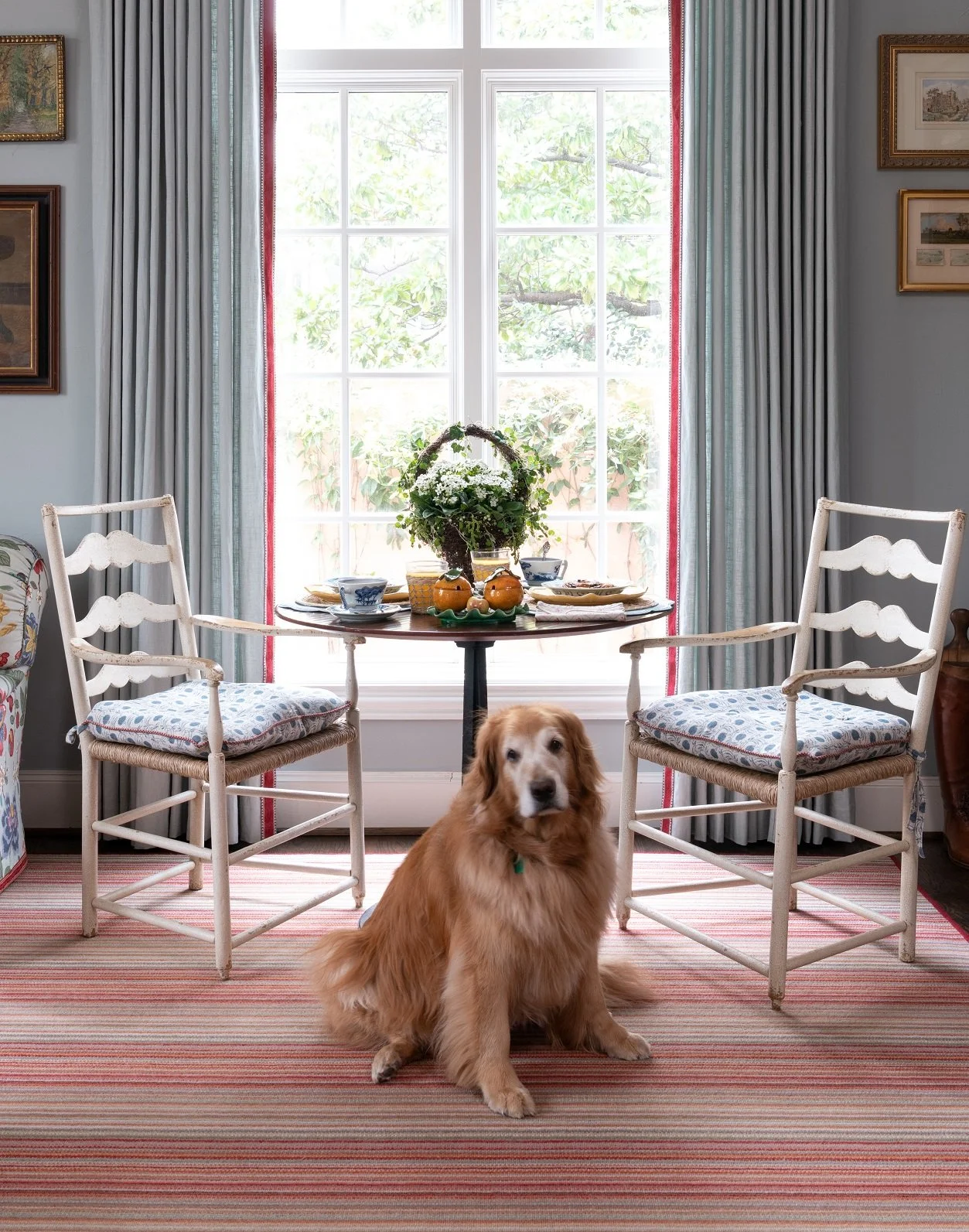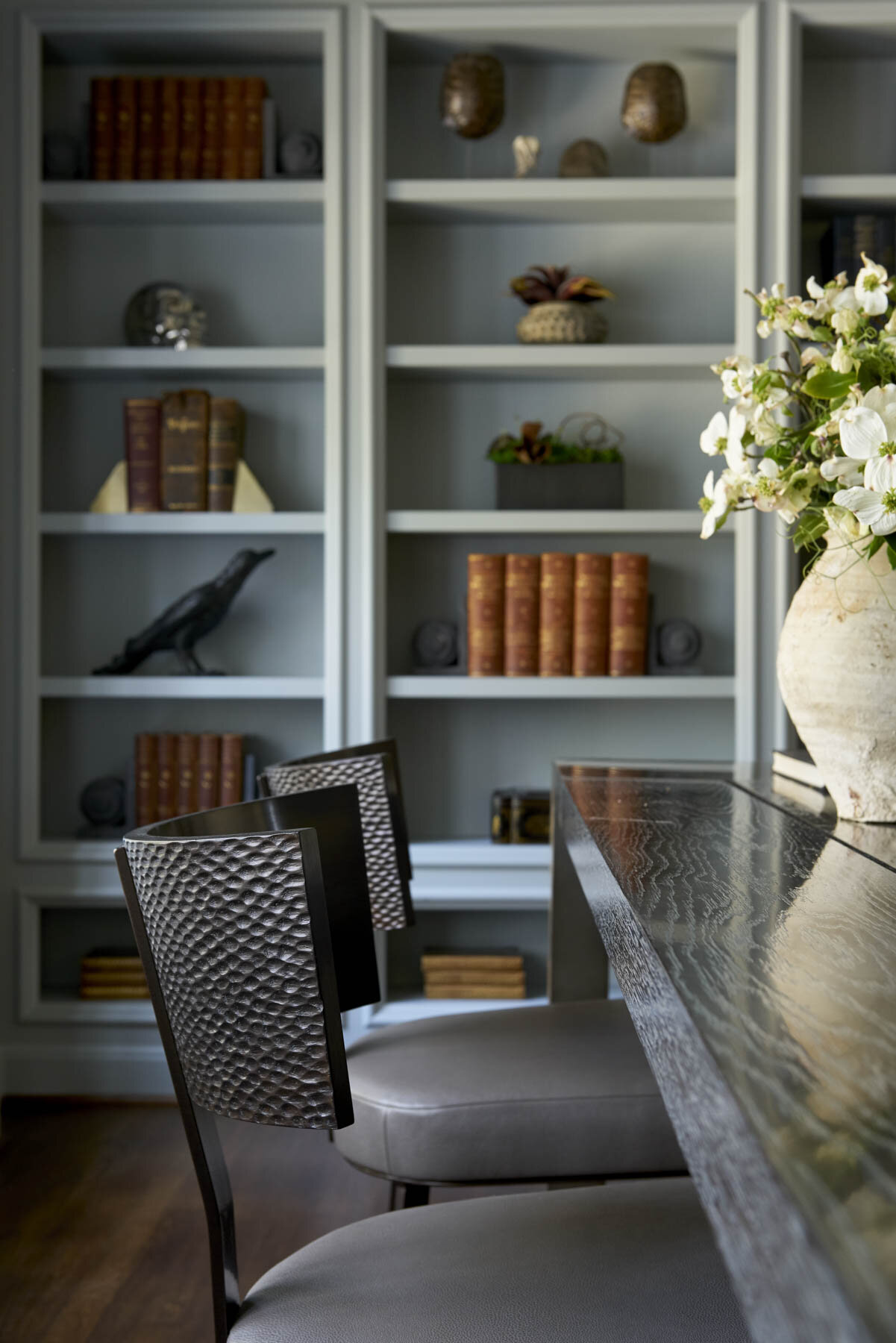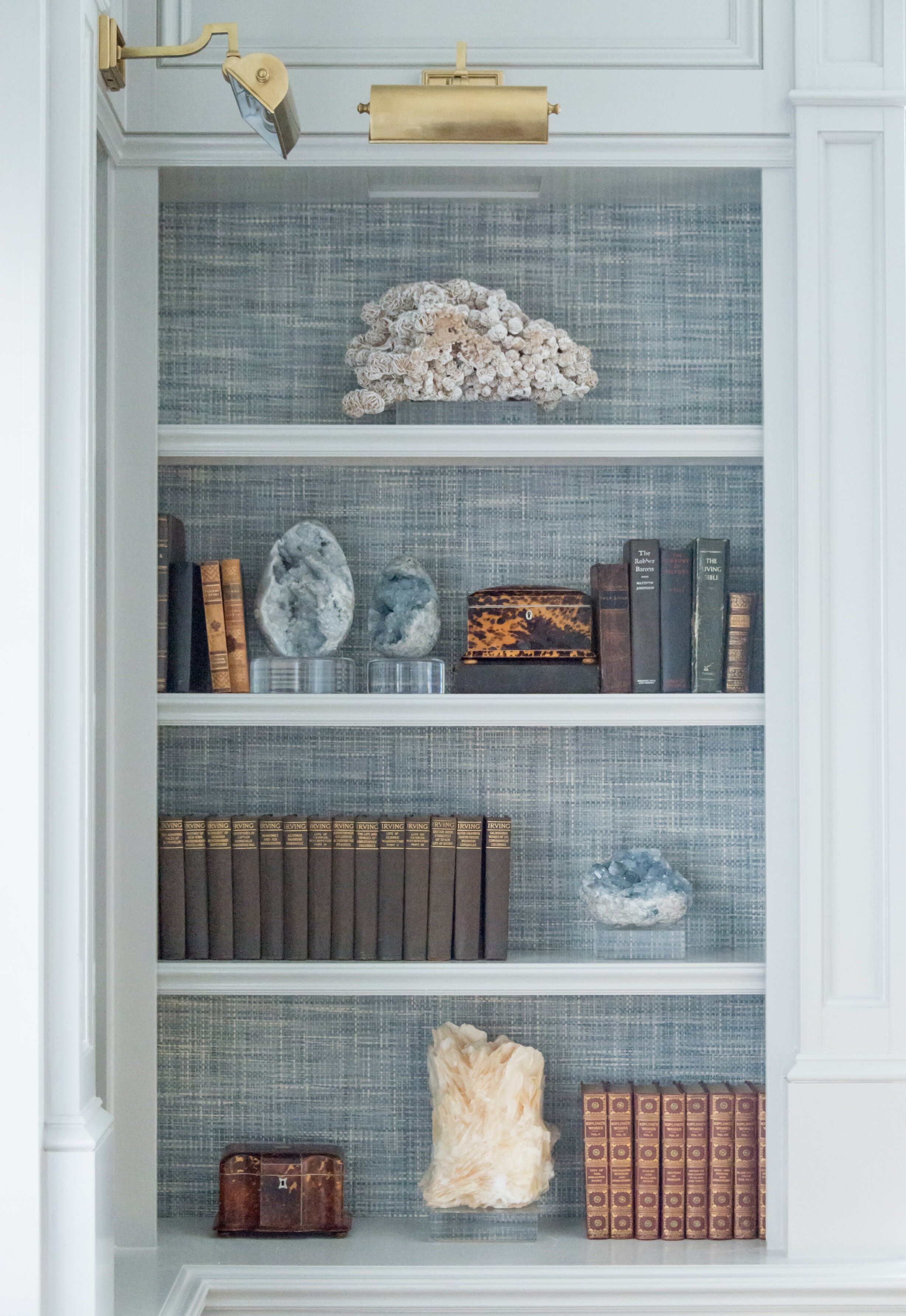We used a Sunbrella fabric for this sofa in a Kessler Park home. Sunbrella is easy to clean up and great for sun resistance.
According to the American Veterinary Medical Association, 45.5% of Americans own dogs, while 32.1% of Americans own cats. As an interior designer, I need to know how to design homes for all of my Dallas clients, including those with small children or pets.
Designing a pet-friendly home presents several unique challenges. Even well-behaved pets can cause a lot of wear and tear on a home over time. Dog crates, dog beds, litter boxes and cat trees also stick out like a sore thumb. Thankfully, there are ways to protect your furnishings and disguise pet clutter without compromising on style.
Buy Heavy-Duty Fabrics
Indoor/outdoor rugs are the best choice for a home with pets. Rugs can also be treated to protect them against stains, making them easier to clean when accidents happen.
Any pet owner knows that keeping dogs and cats off furniture can be a losing battle. That’s why it’s important to choose durable fabrics, especially in the rooms your pet spends the most time in. Examples of high-performance fabrics include Sunbrella, Krypton, microsuede, microfiber, canvas, and indoor/outdoor fabrics. Another option is scratch-and-stain-resistant leather. If your pet has a favorite chair or a favorite spot on the couch, you can put a blanket there to keep their hair off the furniture itself.
Pet beds give your furry friend another place to rest—and shed hair—besides your furniture. Make sure to find one with a washable cover and a fabric color that complements the rest of the room.
If you own cats, stay away from anything with an open-weave that they can get their claws in. Avoid looped carpet, boucle, and tassel rugs, which some cats love to chew on. Performance velvet is a good choice that often deters scratching. Although pet hair and lint clings to velvet, it can be easily vacuumed off.
Rugs made of a tight wool weave can withstand scratching. Since cats can get their claws into loop pile rugs, I’d advise cat owners to choose cut pile rugs instead. Remember to secure your rugs to the floor with rug tape or rug pads.
Hide Pet Items in Plain Sight
Litter boxes and small dog crates can be discretely hidden inside modified cabinets. Search online for “litter box enclosures” or “dog crate furniture” for ideas. Large dog crates can be hidden under a tabletop with a tablecloth.
Nowadays, you can find cat trees or scratching posts that are designed to look like art pieces. Wall-mounted cat beds or cat shelves also give your cat a cozy perch to survey the room, without using up floorspace.
Owning multiple pets means you’ll have a lot of food and water dishes cluttering the kitchen floor. One popular solution is to build a kitchen island with a nook at floor-level for storing pet dishes—something to consider if you’re building a new home or remodeling your kitchen. A shallow toe-kick door can also be repurposed as a cat feeding station.
Pet toys can be stored in a bin or a woven basket with a lid to keep them out of sight. Consider putting your cat and dog treats in pretty jars instead of leaving them in their original packaging.
Vet Your housePlants
Does your cat love to nibble your houseplants? Offer them “cat grass,” which they can safely munch on, instead. You could also try decorating with faux plants instead of live ones. Before adding any live plants to your home, you should always make sure that they won’t be toxic for your pet. You can find a full list of plants that are dangerous for dogs or cats on the ASPCA website.
stay on top of grooming
When you are diligent about grooming your pet, it helps keep your home clean, too. Brushing or bathing your pet removes any hair that would otherwise end up on your floor or furniture. Animal hair leaves behind an oil that attracts dirt, so make sure to vacuum it off furniture at least twice a week.
Luxury vinyl tiles are a great flooring option for a home with pets because they’re easy to clean and durable. Vinyl tiles can even come with a faux wood finish. Avoid high-gloss tiles, which will highlight dirt and pawprints.
You can help protect your floors by regularly trimming your pet’s nails. Seen here is a photo from the foyer in a Dallas home we designed.
If you’re in the process of building a new home, plan ahead on where you want to bathe your pet. The mudroom is the perfect place for a washing station because you can take care of your pet’s muddy paws as soon as they return from the outdoors. A walk-in shower with an extra-long nozzle is another solution.
Even if you’re not allergic to your pet, it’s not a bad idea to use an air purifier. Air purifiers reduce allergens in the home and help cut down on pet odors too.
Keep Collectibles Out of Reach
There’s no need to leave your shelves bare if you have pets. Just take precautionary measures to make sure that no accidents (or intentional sabotage) happen. For starters, keep any accessories up and out of range of your dogs’ tails. Dealing with cats is trickier because they love to jump up high and knock things off of shelves. Try securing decorative objects with earthquake putty, or choose bottom-heavy pieces. For example, a vase can be filled with aquarium gravel to make it harder to move. Place your heaviest objects (like crystals) on the lowest shelves. Especially delicate or valuable items should always be kept in a glass display case.
Plastic table toppers help protect your wood coffee tables from scratches. When decorating your coffee table, gather your small objects in a tray. That way, even if the cat knocks them over, your items should be contained in the tray.
If you’re having trouble finding durable home goods that fit your home’s style, you could always contact an interior designer. Some of my favorite published projects have been for clients who owned dogs. Just because you live with pets doesn’t mean you have to settle for less. By choosing your fabrics wisely, and finding clever ways to disguise pet paraphernalia, you can keep your dream home looking beautiful for years to come. To schedule a consultation with Chambers Interiors, call our Dallas office at 214-651-7665 or send an email to margaret@chambersinteriors.com.













